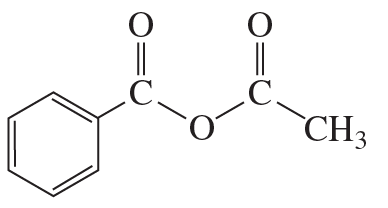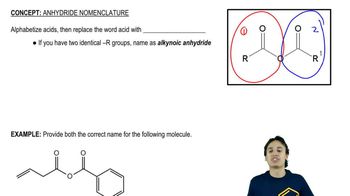Textbook Question
Name the following carboxylic acid derivatives, giving both a common name and an IUPAC name where possible.
(m)
(n)

 Verified step by step guidance
Verified step by step guidance Verified video answer for a similar problem:
Verified video answer for a similar problem:



 3:35m
3:35mMaster Anhydride Nomenclature with a bite sized video explanation from Johnny
Start learning